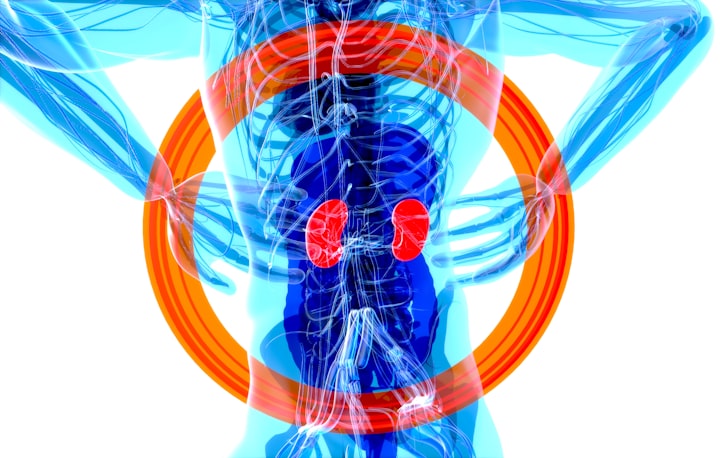Cystinuria
My Struggle With Cystine Kindney Stones

Not everyone knows this, but there are many types of kidney stones.
The most common being calcium stones, but there are more rare types. I myself have a more rare condition called Cystinuria, which produces Cystine stones. About 1 in 7000 to 1 in 10,000 people on average get this kind of stone.
With Cystine stones, they are formed when two forms of an amino acid called Cysteine bind together. It is odd because it is genetic, but neither one of my parents have ever passed a stone. My Urologist told me that I inherited it because each of my parents held a specific gene, that when combined, creates Cystinuria. So even though they have never had to deal with a stone themselves, the combination of their genes ended up giving me the condition. Thanks, Mom and Dad!
I have passed well over 200 kidney stones since the first time I passed one at 17. I have had over 20 surgeries to have them removed, and the largest stone I have ever been recorded having was 2 centimeters! That one created a lot of issues for me.
Symtoms of kidney stones:
Even though there are different kinds of stones, the symptoms are all the same. So if you are having these symptoms, you may want to go get checked to see if you are passing a stone.
1. Sharp pain in side or lower abdomen (Renal Colic)-
This can be in one side or both. I have had kidney stones that have created a bi-lateral kidney infection.
2. Blood in your urine-
This was very common for me when I first started passing stones. But it has not always been the case. Sometimes I could not visibly see any blood in my urine, but once they tested it they were able to detect it.
3. Painful urination-
This one also has been hit or miss for me. A good reason could be because it depends on if I have the next symptom.
4. UTI (Urinary Tract Infection)-
Usually if I am passing a stone, it comes along with a bladder or kidney infection. A good way to tell if that is the case for you, is trouble urinating, or cloudy, funky smelling urine. It can also be painful when you try and pee.
5. Fever/chills- and/or vomiting-
There have been many times where the pain has gotten so bad that it has caused me to vomit. The most common and accurate pain that people have related this to is the pain of childbirth. If you experience fever or chills go to the E.R. right away because there is a good chance you're showing signs of an obstructed stone.
6. Obstructed (blocked) stone-
This is when the kidney stone gets lodged or stuck and is blocking the flow of the kidney. This has happened to me more times than I like, and it can be very dangerous if not treated right away. It will more than likely lead to a kidney infection, and trust me when I say, you want to avoid that at all costs. Dealing with the pain and discomfort of the stone is sever enough.

There are several types of procedures you can have to remove the stone if it is obstructed. I have had all 3 different kinds myself.
Shockwave Lithotripsy:
This is the most common one I have had, and while uncomfortable, it is the least invasive.
The Urologist uses waves and x-rays to locate the stones and break them up. They may leave the pieces in there to flush out on their own, or they may flush them out for you during the procedure.
They often use this method for stones that are smaller than 2 mm in size, or are the softer kinds of stones (which Cystine stones do not fall in the category of softer stones), or if the stone has moved out of the kidney and into the ureter.
You usually go home the same day, and recovery time is about a week.
Ureteroscopy:
This is the second most common procedure I have had, the Urologist takes a small instrument called a ureteroscope through the bladder and up to the stone. He can see the stone through the scope, and then breaks it up with a thread like material that he passes through the scope.
You usually go home the same day, and recovery time is about a week.
Percutaneous Nephrolithotomy:
The last and very least favorite of the procedures for me personally...
This procedure is meant for larger stones, or ones that are in harder to reach places. With this procedure the Urologist makes a small incision in the back, and makes a pathway with a tube directly to the kidney where he then directly grabs and removes the stone.
The tube is then removed after the surgery, to allow drainage during the beginning of the healing process. I had someone record the tube being removed because I could not see (but I was wide awake!) and completely regretted watching it after, to each their own though.
You are kept overnight after this procedure, and the recovery time is much longer, 2-4 weeks. Keep in mind you will be left with a small scar.
Stents:
Now for my least favorite part of the stones, stents.
Sometimes your Urologist will have to place a stent in your Ureter either before or after your surgery. A stent is a small, highly uncomfortable tube used to help the flow of fluids from your kidney to your bladder. This is usually to prevent infection due to kidney stones. Be warned though, they make you feel like you have to pee your pants 24/7.
There are a few different kinds of medications your Urologist can refer you for if that is a route you are looking to go.
So moral of the story, drink lots of water and take care of your kidneys!
I hope this was informative and helped you gain a better understanding of Cystinuria. If I missed anything or you want to add something please feel free to leave a comment or a like!
About the Creator
Tressa Rose
On a serious self-discovering, soul-searching journey. Breaking myself out of a stagnant shell and reaching out for my dream of being a writer. Small steps but this is my start! Please help me by commenting your feedback, I'd be grateful!






Comments
There are no comments for this story
Be the first to respond and start the conversation.